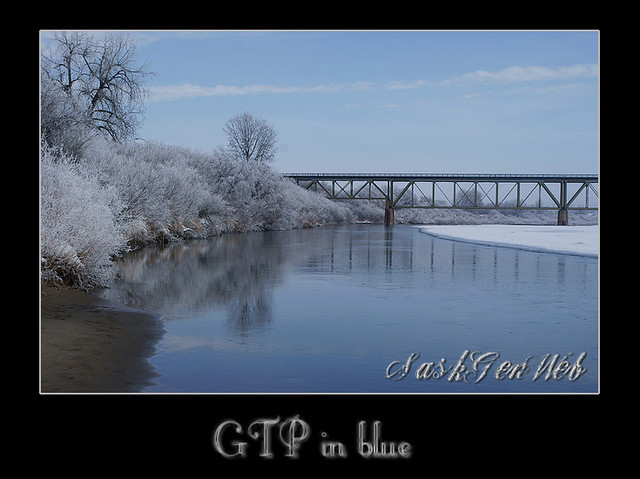
Saskatchewan in 1921 and the 1921 Census.
1921, an era of transition and change begins. Evolution of a community happens over the course of considerable years. It does not happen, no, that an entire province of people rush out on June 1, 1921 to all buy tractors all at once, and leave Daisy nibbling in the field. The transition from horse and plough to tractor began in a farm here and there, and slowly more and more farmers owned tractor, farm truck and automobile. The 1921 census tells a story of people, and their land, the successes and failures of immigration schemes and homesteading ventures and how life was changing.
History "conjures up feelings of what it was like in a day and age not our own," speaks John C. Charyk. The first two decades of the 1900s brought with them a huge wave of people to the plains of Saskatchewan. By 1921, these pioneer settlers were proud to call Saskatchewan their home. The early pioneer had divested their time, energy and blood into the land because they had "faith in the possibilities of the country, stood by that faith, and made a success of their undertaking.
[1]"
"The unorganized territories of British North America had been ceded to the Dominion soon after Confederation, and the West had been tapped and traversed by the Canadian Pacific Railway in the eighties and nineties," documented the Yearbook of Canada 1922/1923. The 1926 Financial Post reported that there were 6,268.72 miles of railway stretching across the province by 1922 serving "2,139 elevators, 896 loading platforms, 554 stockyards, in addition to depots, warehouses, etc." The yearbook continues, "but though western population doubled with each of these decades, it was only with the launching of a large scale immigration movement after 1900 that western settlement and production became a first-rate economic factor." In the two decades 1901-1911 and 1911-1921, the census returns showed over 1,800,000 immigrant arrivals to Canada in each of the decades, over 3,600,000 persons in twenty years.
As W.G. Cates, points out, "the 1921 census, as it shows a much lower rate of increase in population during the 1911-1921 period than that of 1901-1911, is naturally disappointing; but the returns must be considered in the light of the Great War...tens of thousands went overseas to their native land to fight; while other tens of thousands went to the United States in order to escape military service." Some 60,000 militia gave the supreme sacrifice in the theatre of war, and 20,000 Canadians who served remained in the United Kingdom following their term of service. Of these 60,000 Canadians
6,428 were Saskatchewan boys according to the Saskatchewan Virtual War Memorial. The mass exodus of citizens, the loss of life, accompanied by the tens of thousands of Saskatchewan personnel serving in the armed forces overseas, might lead one to predict a drop in population, however the 1921 census still showed a population increase.
- In the early days of the war we were much comforted by the fact that men and women were ready to make sacrifices for this, the greatest cause of all. In Canada, and I am sure elsewhere throughout the Empire, there has been manifest a spirit of co-operation, of mutual helpfulness, of a desire to assist, of self-sacrifice which is most comforting to those who have at heart the welfare of our Empire in years to come. So I am sure it will be in the future. The influence of a spirit of helpfulness and self-sacrifice, which we see everywhere throughout the world, and within our Empire, is one for which I give thanks and am most grateful." ~ August 14, 1915. Right Honourable Sir Robert Laird Borden, G.C.M.G., M.P. eighth Prime Minister of Canada
The population of Canada was recorded at 7,206,643 in 1911, and according to the
Canada Year book 1922-1923, it rose to 8,788,483 in 1921. (Saskatchewan was 757,510.)
If the trend of the first decade had continued, it was estimated that the population should have reached 10,100,000. There were at least a couple of factors at work towards the increase of population. "It should also be taken into account that the returns for the western provinces include about 25,000 returned men, who have been placed on farms through the Soldier Settlement Scheme" noted Cote in his census analysis. The 1921 census showed that not only is there immigration from Europe and the United States, but there is a definite migration from East to West.
70 per cent of the arable farm land was in farms by 1921, and the settlement pattern was established. Professor W.B. Baker chairman of the Royal Commission on Agriculture and Rural Life looks at it this way, "in 1901, 96 per cent of our farmers were owners and 61 per cent of the 13,445 farms were under 200 acres in size. The average size of farm was 285 acres. In 1921, 76.7 per cent of 119,451 farms were owner-operated and 32.5 per cent were under 200 acres while the average size of farm had increased to 369 acres." In Saskatchewan, 71 per cent of the population was rural, and the remainder urban. The Morning Leader relates that, "more people means more schools and better schools; more roads and better roads; better medical services; more enjoyable community life with all the advantages which must follow."
However, James Thomas Milton
Anderson speaks of the immigration "problem" in the book
"The education of the new-Canadian: A treatise on Canada's greatest educational problem." He writes in 1918 following the war years "throughout the prairie provinces great stretches of land have been settled by immigrants from European countries. The language of the home is German, Ruthenian, Hungarian, Bohemian, or Polish, as the case may be. In the villages where they trade they have their own merchants, speaking their own language. In these settlements there is but one force at work to Canadianize their children—the public school." Dr. Harold W.
Foght Specialist in Rural School Practice, summed up the post war hysteria, "Are we to be a homogeneous people on these plains or are we to repeat the tragic sufferings of polyglot Austria" He goes on to discuss "the process of making one Canadian-speaking and thinking people" in
A Survey of Education. In 1919, a new school act was passed permitting English as the only language of instruction.
The war had a devastating effect on the peace of mind of the community. Settlers looked at neighbours knowing now who had served for Canada during the Great War, who had deserted, those who chose not to serve, those who left to serve their ancestral lands and those who had lost sons and daughters overseas. Saskatchewan, the great melting pot of immigrants began to give rise to division looking at those who had served with the allies and which communities may have a different allegiance. Saskatchewan peoples along with the rest of Canada sought for a Canadian identity, what it meant to be truly Canadian.
- In Western Canada there is to be seen to-day that most fascinating of all human phenomena, the making of a nation. Out of breeds diverse in traditions, in ideals, in speech, and in manner of life, Saxon and Slav, Teuton, Celt and Gaul, one people is being made. The blood strains of great races will mingle in the blood of a race greater than the greatest of them all.
It would be our wisdom to grip these peoples to us with living hooks of justice and charity till all lines of national cleavage disappear, and in the Entity of our Canadian national life, and in the Unity of our world-wide Empire, we fuse into a people whose strength will endure the slow shock of time for the honour of our name, for the good of mankind, and for the glory of Almighty God." ~ Rev. Dr. Charles William Gordon
Anderson, beginning as inspector of schools around Yorkton between 1911-1918, was appointed director of Education 1918-1922. The Morning Leader reported that "the School Attendance Act was rigidly enforced...a larger percentage of pupils passed their examinations and a great percentage of children made better progress because of regular attendance." It was to this end that school room classes were awarded $3 a day if an average of 15 pupils attended during the school year, and if the schools offered classes beyond grade 7. During the settlement era, 1901-1921, the Department of Education boasted that a new school district was organised every day of the year, however in 1921 only 100 school districts were formed. The department and community both recognised the benefits of consolidated school districts, however the cost of conveying rural children to a consolidated school placed such a transition on hold in 1921.
So what was life like in Saskatchewan in 1921? Saskatchewan men who had served with the military in the Great War (1914-1918) were beginning to return home. This marked great happiness for families with returned love ones, and a time of grief and sadness mourning those who would never come home. However, not only did the communities have the economic transition of the discharged soldiers entering the work place, but the
Spanish influenza set in. About 5,000 lives were lost in Saskatchewan alone from this
epidemic.
The war time population in 1916 of 647,835 had grown in five years to 757,510. The Model T automobile began to replace the horse and buggy across the prairies, by 1921 there were
34,085 cars. Dotting farms as well, tractors were commencing to replace horse and plough. In 1921,
19,243 tractors were counted in the census returns on 17,523 farms across the province.
With the increase in mechanized travel, the Department of Highways commenced a project in 1920 of laying better roads and bridges. These early roads followed the surveyed township roads, and travel could be done "on the square", it was not until the 1950s and 1960s that highways were "straightened".
Families would have no televisions, nor computers nor video games. "The school children are actively engaged in eliminating Mr. Gopher, and in some cases some ingenious methods of capturing and killing have been invented by the school boys of the province."
Source" Children would receive two cents bounty or thrift stamps on delivery of gopher tails to their school teacher. By May 1 of 1917,
514,000 gophers had been taken care of by the "Junior Agricultural Service League of Saskatchewan" that spring alone.
1921 was the year before the first Saskatchewan radio station was established, there was no widespread electricity available. Rather than having a television agricultural forum or radio call in "talk show" to catch up on the latest news, farm families could just pick up the telephone and listen in to the "party line" which was often connected to about eight other neighbourly homes. Central exchanges connected various party lines, and in the coldest of winters, without roads, and snow blowers neighbours could catch up on the latest gossip, sales, funerals and chat back and forth.
The high influx of settlers, meant pasture land was being taken up by homesteaders, and the era of the great ranches drew to a close around 1921. The last round up for the Matador ranch was 1921 when 3,400 head of cattle would be taken from the ranch near Saskatchewan Landing (Moose Jaw area) to Waldeck and on to Chicago for sale. No longer would the spring cattle trek see yearlings and two year olds arrive from Texas to the Matador ranch. The ranchers would work long hours, before sun up and after sun down even during the months of long summer days, the treks gave the ranch hands and the settlers an event, and the cowboys had their "semi annual trip to town."
Source Gone now were the days when "One arriving in town, the first thought was for a drink. In the old days the men would ride right into the building and up to the bar."
- Come alive you fellers," hear the foreman shout.
"Drop your books and banjos, fetch your saddles out...
Shake that squeaky fiddle, Red, go and get your hoss,
"Dutch, ain't you got duties, as the chuck-wagon boss?
"Range is gettin' grassy, winter draws its claws,
"Calved are fat an' sassy, teasin' of their maws,
"Loafin' days are over, dreamin' time is gone,
No more life in clover, for the round-up's on."
~ Folksong.
1921 was a year of a severe economic depression, Saskatchewan farmers were still reeling from the drought of 1920. Prairie farmers were also hit by the international wheat market collapse of 1921. The growing season of 1921 looked promising showing 14 bushels to the acre as compared to 11 bushels of 1920. Farmers, and communities were very optimistic. The rains came during harvest season and No. 1 Northern Wheat was reduced to No. 4. Despite their threshing efforts, it cost more to take off the crop quickly, and the market price was low. The price for a bushel of wheat brought $1.50, compared to $0.76 in 1921, wheat fell a whopping 50 per cent. During the Great War, the Dominion government "controlled the sale and pricing of wheat" through the Canadian Wheat Board (CWB) in 1917, "wheat prices rose to $2.21 a bushel and then $2.62 by 1919." This same year (1919) that the CWB was dismantled.
The Soldier's Settlement Act provided for land and loans set at 5% as assistance to erect buildings, purchase livestock, implements and equipment. Though the prices were excellent in 1918 when the soldiers returned home, the growing season was affected by drought, hail and grasshopper infestations. The year of 1919 proved challenging, grasshoppers remained prevalent, wheat was affected by a fungal disease called rust and some areas were hard hit by drought. Returning servicemen on their new Soldier's Grants were tasked with clearing the land on their newly allocated quarter sections. However, these quarters were not the "best of the best" sections of land, those had already been taken for homestead settlement. The only land which was left were areas which had been already abandoned by homesteader or Indian reserve, forest reserves, and unused school lands.
The drought of 1920 affected the livestock industry of 1921, as there was a shortage of feed, and the market had taken a downward trend. During the "depression in 1921...thousands of farmers and ranchers were ruined....the average dept-ridden farmer of today cannot possibly pay taxes, interest and carry on farm operation on the proceeds of the present prices on farm products," reported the
Calgary Herald. The Minister of Agriculture, Honourable C.M. Hamilton testified "that the average Saskatchewan farm of a half-section worth $12,000, had a mortgage on it of $5,000." Without tax payments, the school districts had no ability to pay their teachers, Austin F. Cross recalls months of despair and agony which culminated in a turning point in his life when the bank relented to loaning the school trustees money.
Saskatchewan, the land of snow,
Where winds are always on the blow,
Where people sit with frozen toes--
And why we stay here, no one knows.
Saskatchewan, Saskatchewan,
There's no place like Saskatchewan.
We sit and gaze across the plains,
And wonder why it never rains,
Till Gabriel doth his trumpet sound,
And says the rain has gone around.
~ William W. Smith
The government under William Melville Martin, second premier of Saskatchewan The provincial government supported railway freight rate reductions, and rail branch line construction. Although the government coffers were drained from the wartime effort, Martin established $5 million available to farmers through a mortgage lending organization through the sale of government bonds.
As of June 1, 2013 92 years will have elapsed since 1921 when the census enumerators went out door to door on June 1, 1921. So, according to Library and Archives Canada, the census should be released from Statistics Canada and transferred over to Library and Archives Canada LAC for public usage. According to the
LAC, "The 1921 Census was taken on June 1st, which means that it will be in the custody of Library and Archives Canada on June 1, 2013. Our intention is to make it available to researchers online, in the same format as previous censuses, as soon as possible after that date.
Source"
The
Canadian Century Research Infrastructure CCRI is currently creating a 4% sampling of the 1921 Census of Canada in conjunction with Statistics Canada. Currently the instructions to enumerators is available as a pdf file. The CCRI will also look towards establishing databases for the 1911, 1921, 1931, 1941 and 1951 census as well.
The lure of love and the west.
If you've heard the wild goose honking, if you've seen the sunlit plain,
If you've breathed the smell of ripe grain, dewy, wet,
You may go away and leave it, say you will not come again,
But it's in your blood, you never can forget.
~Nellie McClung.
~ Article written by J. Adamson
Further Information:
Census Information
Saskatchewan History and Ethnic Roots
1919 Alberta, Saskatchewan Manitoba Waghorn's Guide
1925 Alberta, Saskatchewan, Manitoba Waghorn's Guide
Gazetteer of U.S. and Canadian Railroads 1922
Saskatchewan Highway Map 1925
Rand McNally 1924 Indexed Pocket Map
Saskatchewan Wheat Pool Maps 1924
______________________________________________________________________________
Related posts:
Saskatchewan Census News Release
Why were Canadian "Last Best West" homesteads created?
The Era of Saskatchewan One Room Schoolhouses
How did pioneers travel to their prairie homesteads?
Where were Saskatchewan Homesteads Located?
How do I locate my ancstor's home town in Saskatchewan? Have you ever visited your ancestral home?
______________________________________________________________________________ Follow me on
Flickr,
Word Press,
Facebook,
Blogger,
Twitter,
Tumblr,
Live Journal,
500 px and
Flickriver
______________________________________________________________________________

______________________________________________________________________________
Thank you for stopping by, your comments are much appreciated. All rights reserved. Images copyright © Aum Kleem; Article copyright © J Adamson. All my images and text are protected under international authors copyright laws and Canadian photography laws and may not be downloaded, reproduced, copied, transmitted or manipulated without my written explicit permission. They may be licensed through
Getty images. Peace and love be with you. Namaste.
______________________________________________________________________________







